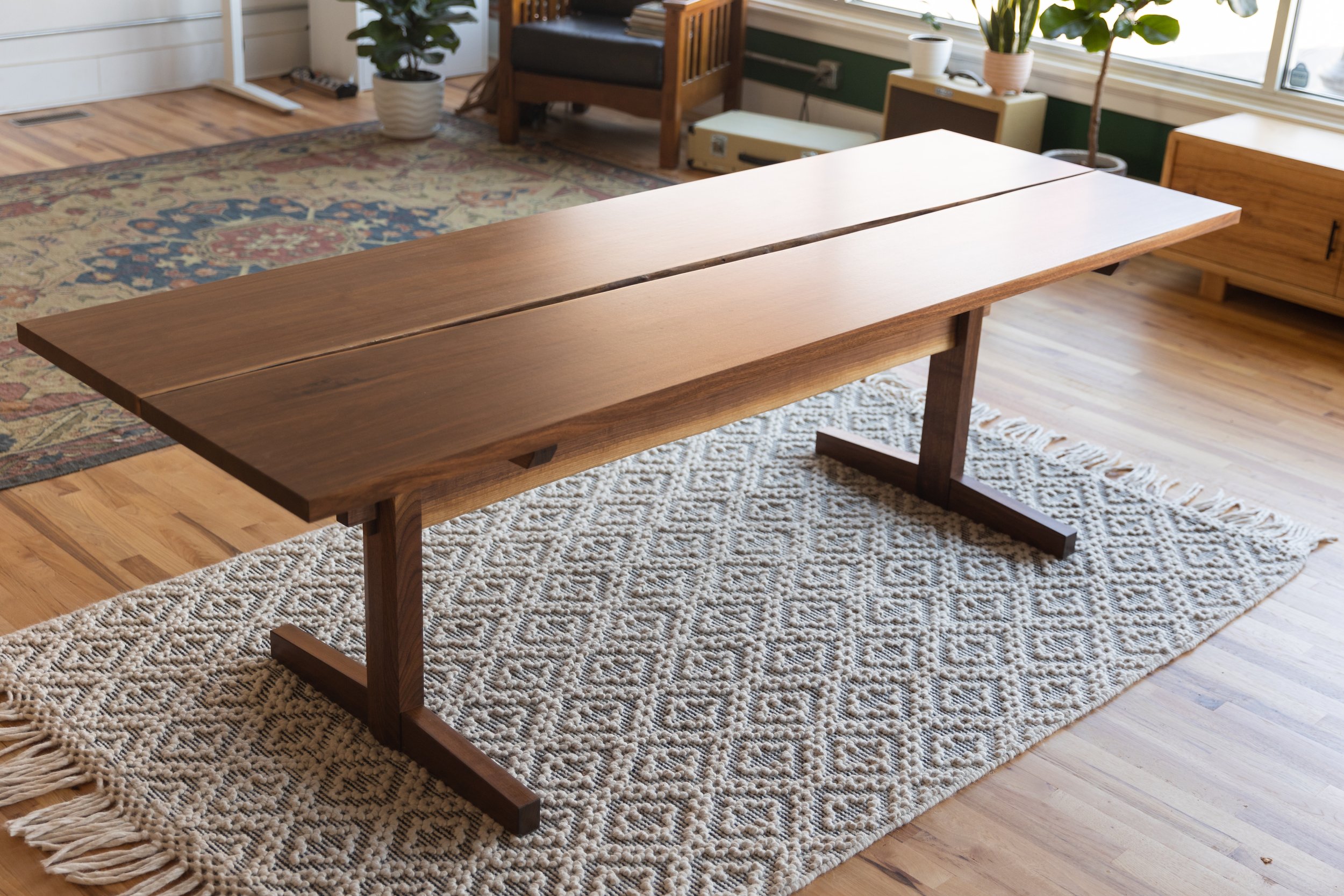"Shuhari" Traditional Japanese Trestle Table in Black Walnut
(SOLD)
-----
This is my humble attempt at making a traditional Japanese style trestle table in black walnut. I made this over the course of about 1-1/2 years chipping away at it in small chunks of free time at the end of any random day in the studio. Because I took my sweet sweet time, I had the opportunity to evaluate and really articulate what I thought was occurring, conceptually, as I tried my best to copy the masterful and elusive Japanese style of furniture making (which I often don’t get to do with my furniture builds!). I was taking part in the process of mastery. More on that below…
The name of this table was inspired by a conversation I had with Japanese friend of mine, Hiro, who taught me a Japanese concept which describes the stages of achieving mastery: “Shuhari”. Hiro is the owner and head chef of the HiroNori Craft Ramen restaurants in southern California.
What does Shuhari mean? It roughly and directly translates into English as "to keep, to fall, to break away", and is separated into three stages of mastery: Shu, Ha, and Ri.
“Shu”, or “to keep”, refers to the earliest stage of mastery which begins with tradition. It is about understanding and learning fundamentals, traditional techniques, heuristics, and proverbs. Applied to furniture making this could be learning from a teacher, or it could be someone like myself directly copying other great artists and furniture makers style as a means of learning basic or advanced concepts. “Shu” is about building a solid foundation of technique, and expanding your repertoire of skills.
“Ha”, or “to fall”, refers to the second stage of mastery when one begins to break away from tradition and detach from illusions of self. In other words, using your fundamental skills based in tradition for the purposes of experimentation and exploration. One might do this by blending two contrasting techniques in creative and new ways, or attempting to stretch the limits of a technique. “Ha” is about learning to reach beyond tradition and the bounds of yourself.
“Ri”, or “to break away”, refers to finally achieving a mindset free from techniques or proverbs, and becoming one with your spirit alone without clinging to forms; transcending the physical. In terms of furniture making, I think this means reaching such a high level of artistic freedom and expression that you might begin to create an entirely new tradition; a new tradition to join all other traditions. “Ri” means that you have developed and refined your own unique style so well that when someone sees your furniture, they know that only one person could have made it… you! Often times, those who achieve “Ri” are the household names we come to know in history and strive to become today.
This table, in my opinion, was made within the realm of “Ha”. I am by no means a master and my main intention was to copy the Japanese style of recent centuries as best I could. However, I also wanted to inject my own personality where I was able to. The double live edge seen on the stretcher, for example, would be my attempt at subtly incorporating a non-traditional element within the traditional Japanese trestle table style.
Some traditional Japanese carpenters and furniture makers do not use hardware like screws or nails, so they must use or even invent creative ways of joining separate pieces of wood together. This is arguably why many of their centuries-old (and even millenia-old) cypress wood pagodas are still standing today!
I tried to make this table no differently, so it can be disassembled into its’ separate parts and reassembled for easy moving, or even shipping. No screws were used in this table. The two top slabs connect to the top rails of the trestle legs with tapered, floating dovetails. This type of tricky joinery is not only an extremely stable and glue-less wood-to-wood connection, but it doubles as a way to ensure that the top slabs of wood stay flat through the decades of its’ life. Next, the pegged-through-tenons that connect the stretcher to the uprights are a common Japanese technique as well.
Each piece is finished with a protective oil and hardwax blend or commercial grade conversion varnish for a beautiful and warm matte finish. Finish will not water-spot.
Dimensions (w/ legs):
96" L x 35" W x 30" H
*inquire for bench pricing*
-----
Interested in something similar? Reach out for a quote!
*Any size is possible, and we can create a wide range of leg styles and designs!
* Lead time is an average of 4-6+ weeks, depending on complexity.
* Custom live edge tables and boutique furniture also available for pickup in the Indianapolis and Fort Wayne areas
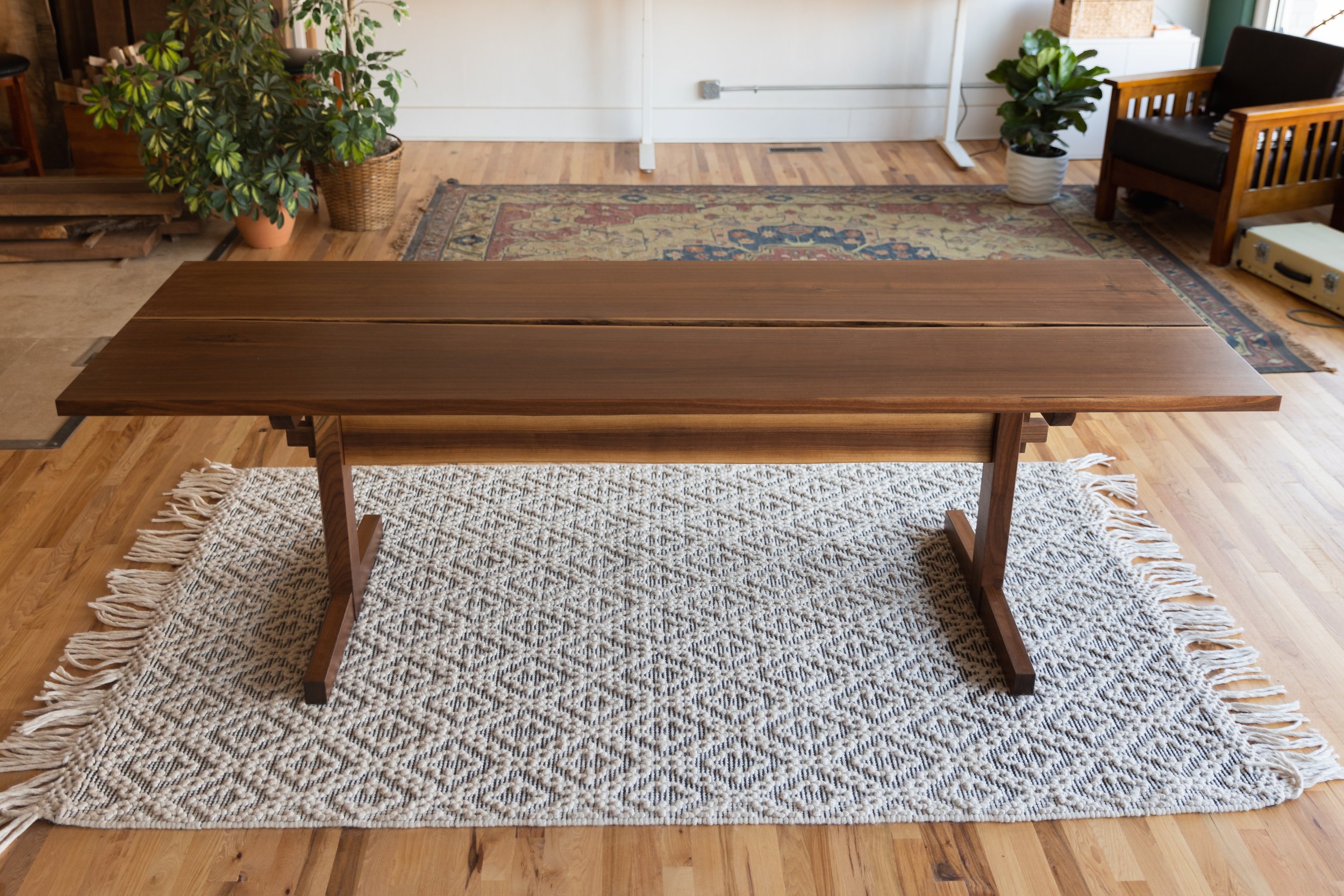
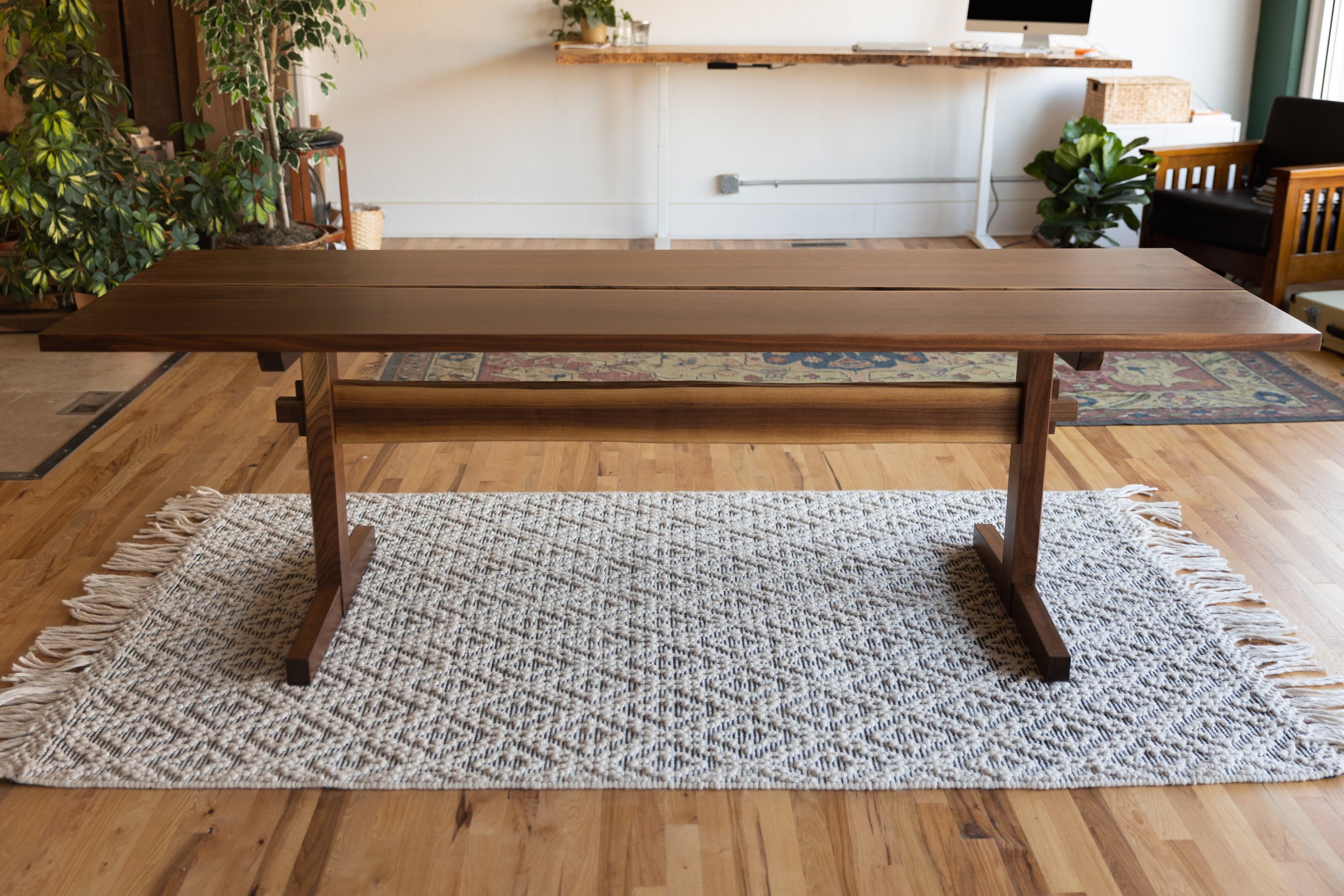
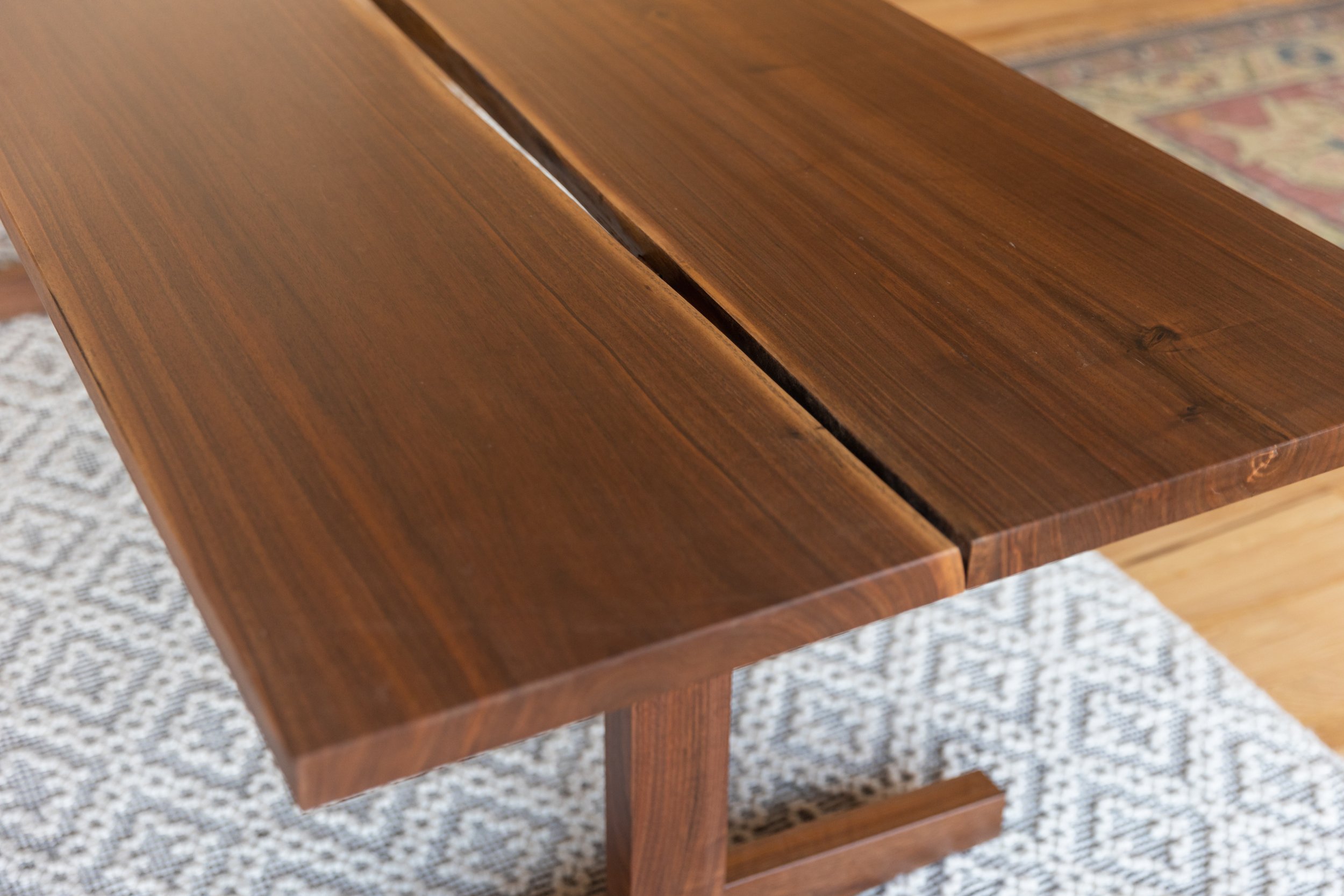
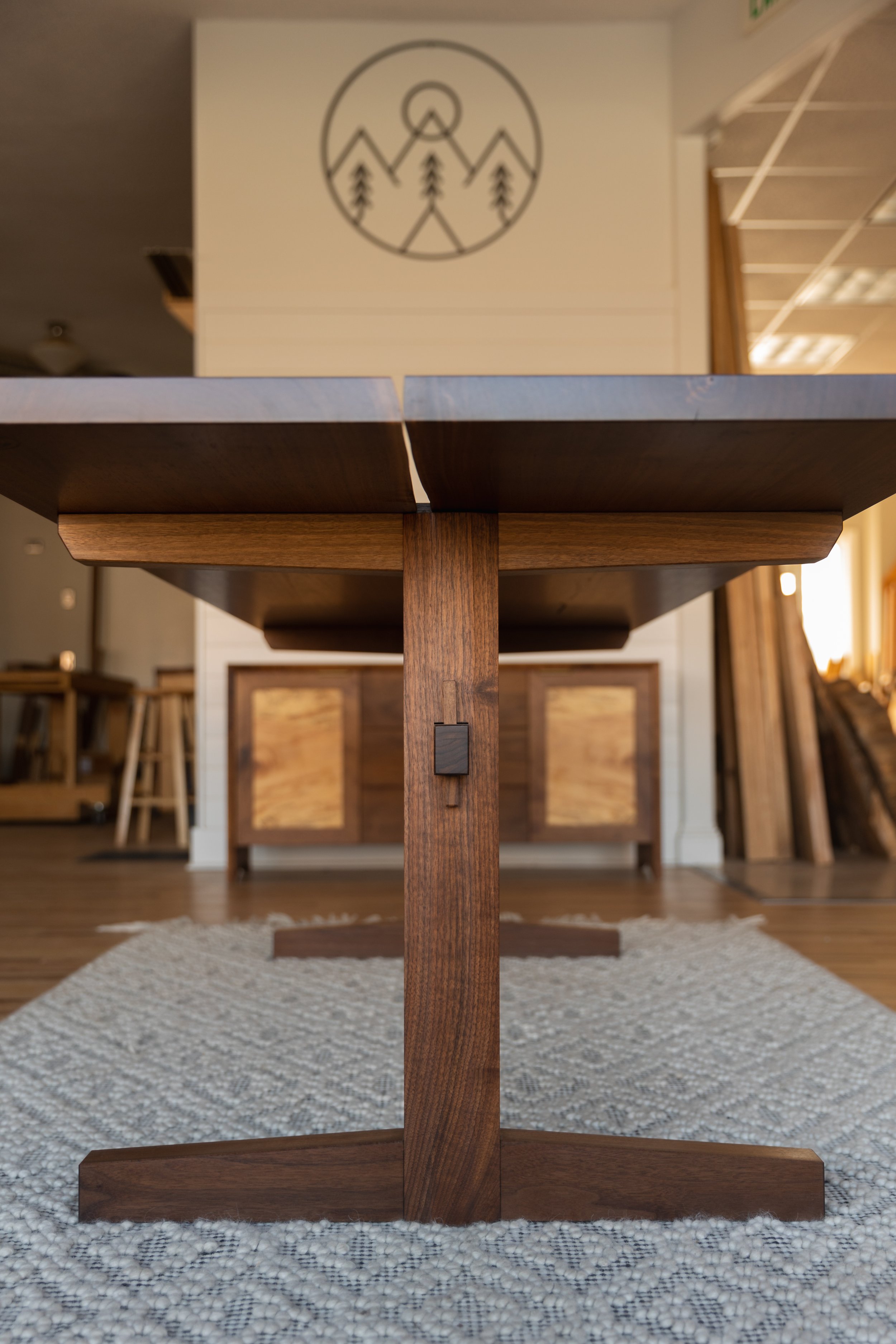
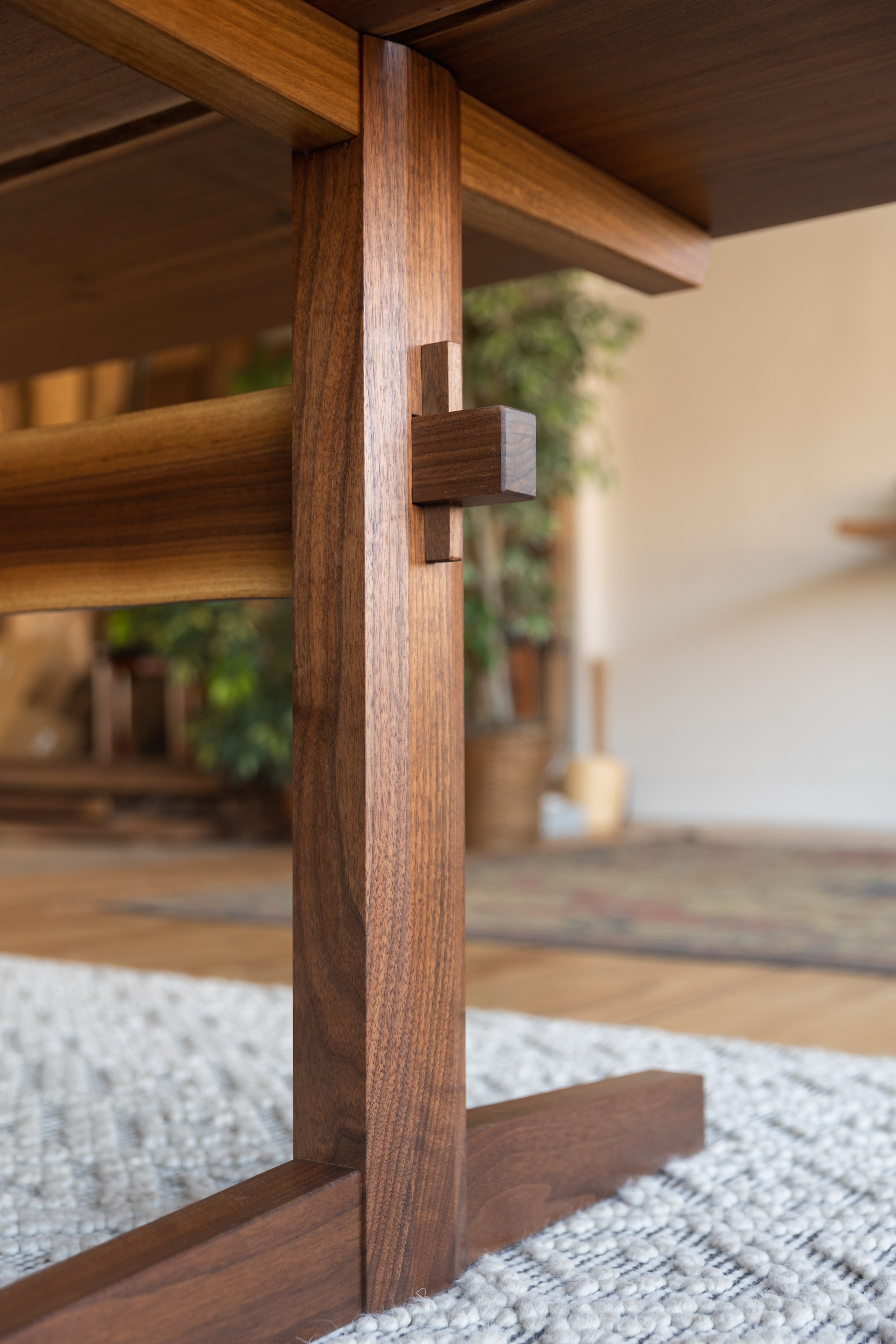

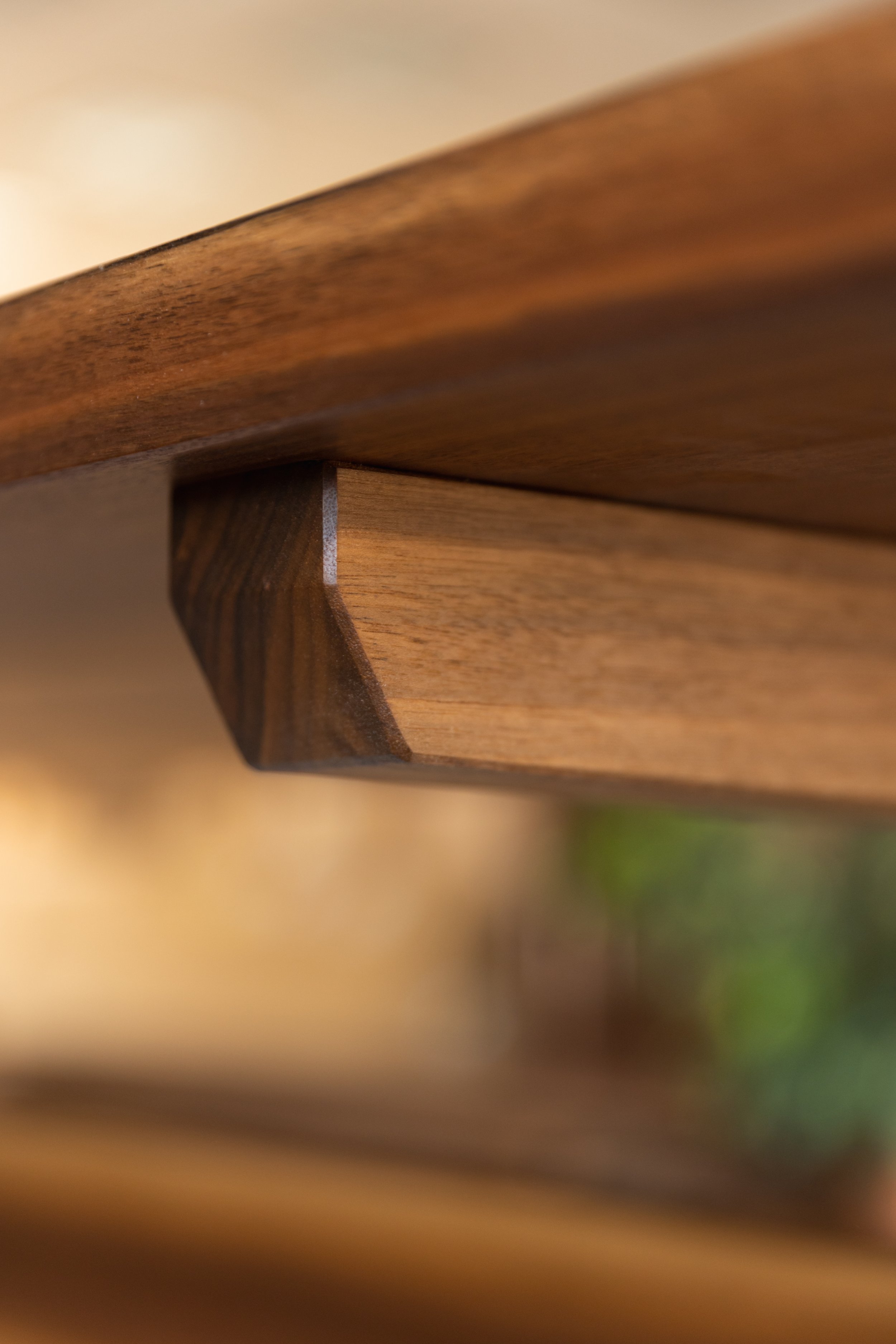

Interested in an item like this? Get in touch below for a quote!

